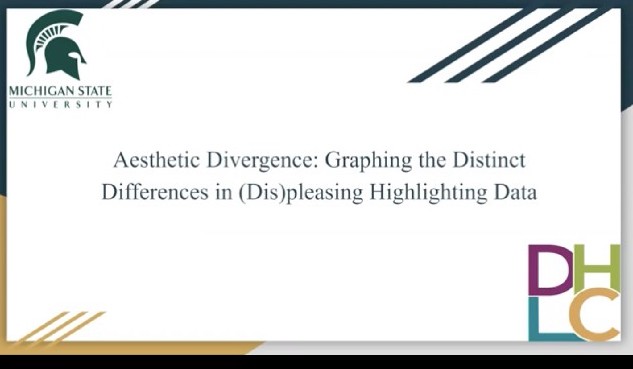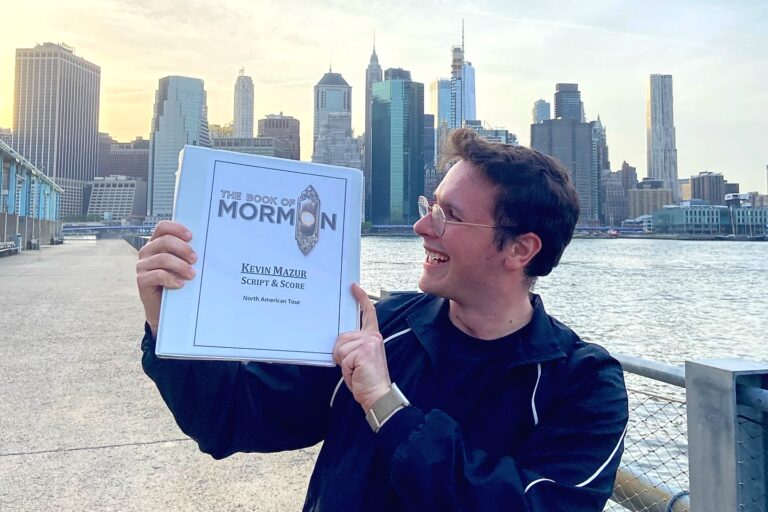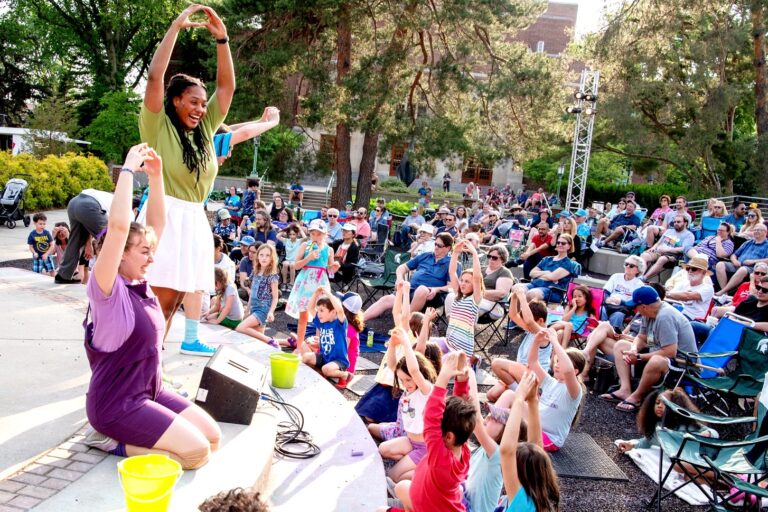Five students from the College of Arts & Letters received first place awards for their presentations at the 2021 University Undergraduate Research and Arts Forum (UURAF). The grand prize recipients will be announced in June.
Almost 500 students from all majors at Michigan State University presented their work as part of the 23rd annual UURAF. Of those students, 19 were from the College of Arts & Letters.
This year’s UURAF was a virtual event that took place April 15-19 and consisted of pre-recorded poster, oral, and performance/showcase presentations. Student presenters met virtually as a group with judges and evaluators for facilitated discussions about their creative works. Visitors to these sessions also were permitted to submit questions to the facilitator.
The five first place winners from College of Arts & Letters include:
- Maddie Hannon, Spanish senior
- Mark Zum Mallen, sophomore double major in Theatre and Mechanical Engineering
- Nala Davis, Film Studies senior
- Jacob Phillips, English junior
- Jack Rechsteiner, Linguistics senior
Maddie Hannon
Maddie Hannon received first place in the Linguistics, Language, and Speech category for her oral presentation on “Inter-Dialectal Perception in Spanish.”
This study investigates the perception of regional dialects within the Spanish language. The focus is on designing a pilot study to explore how listeners with a varied degree of contact categorize assibilated variants of Spanish rhotics. Assibilated variants characteristic to the speech of Argentina represent only a sliver of the linguistic variation that the Spanish language has developed over the 500 years of its establishment and diffusion throughout the world.

Due to the sheer amount of linguistic variation across Spanish dialects, perception studies are necessary to understand how speakers communicate with one another. Recent research reveals that inter-dialectal speech perception depends, among a variety of factors, on listeners’ own phonemic and allophonic inventory (i.e. the sounds of the dialect), contact, or experience with other dialects, and even geographic proximity.
Latin American Spanish speakers will complete an identification task of pairs of sounds that are acoustically and perceptually similar to examine the interpretation of linguistic categories and intelligibility across Spanish dialects.
Mark Zum Mallen
Mark Zum Mallen received first place in the Visual and Performing Arts category for his showcase presentation, titled “Finding Narrative Satisfaction Through Interactive Performance.”
The goal of this research is to determine the possibilities of increasing the connection between performer and performance through an improv or narrative story. The performance being studied is a long-form improv that incorporates technological and physical games to increase audience/actor cooperation.

Through these two mediums — technology and improvisation — the audience is expected to be less frightened of direct interaction with the show and act more cooperatively with its actors. Qualitative measurements of audio and visual cues such as length and volume of laughter, facial expression, and body language are taken in an attempt to measure effective audience engagement. These parameters are then used to determine the level of cooperation and contribution of the audience at each performance. Surveys also are used to gather individual and self-reflective data from attendees, indicating the extent of each activity in achieving the desired effect.
While this performance is still in developmental phases and has yet to be tested, trial and error has provided a clear direction for the growth of this research. This performance articulates methods for creating a space in which the audience can be incorporated creatively and comfortably as they personally interact with each performer.
Nala Davis
Nala Davis and Cherished Kirkland, Media and Information senior, received first place in the Film and Digital Media category for their showcase presentation, titled “Twin Pandemics.”

This documentary short follows three college students as they confront two great threats facing our nation: the coronavirus pandemic and police brutality.
The film follows students from March 2020 through January 2021 as they combat isolation, COVID-19, and the tragic murder of George Floyd all while still attending classes. In a world where “I can’t breathe” is a symptom of both police brutality and COVID-19, these students must find a way to navigate their new reality.
Jacob Phillips
Jacob Phillips was part of a team, which included Nikita Nambiar, Neuroscience senior, Jacob Okulewicz, Physiology junior, Allison Simpson, Secondary Education and Teaching junior, Milena Sinistaj, Human Biology junior, and Carly Wholihan, Lyman Briggs sophomore, that received first place in the Digital Humanities category for their oral presentation on “Aesthetic Divergence: Graphing the Distinct Differences in (Dis)pleasing Highlighting Data.”
The Digital Humanities and Literary Cognition Lab (DHLC) at Michigan State University is conducting an interdisciplinary study of sonnets seeking to examine the similarities and differences in the aesthetic pleasure that English majors and non-English majors (students from a Psychology pool) experience while reading poetry.
This study was run in two rounds, the first consisting solely of English majors and the second round consisting of participants from the Psychology pool. In the study, participants were tasked with highlighting moments they found aesthetically pleasing in green and aesthetically displeasing in red. The lab compiled the data by counting how many times each word was highlighted for each data set.

The lab graphed this qualitative data to visualize the results and then compared the results of both parts of the study. When initially looking at the graphs, the research team found that the trends between the two groups were more similar than initially hypothesized. However, as the team continue to analyze the data, they noticed distinct moments of diverged data around certain words or phrases that create visible spikes in the graphs.
This student research team sought to determine whether there were more moments of distinct difference in the positive or negative highlighting. They hypothesized that the displeasing data would show more drastic moments when the two data sets differed in highlighting. The DHLC believes that understanding these moments of difference is important because it can provide valuable insight into why people respond to texts in certain ways.
Jack Rechsteiner
Jack Rechsteiner and research partner Alexis Furkioti, Advertising Management junior, received first place in the Communication Arts and Sciences category for their poster presentation on “MI Diaries: The Development of a Research Project as a Brand.”
It is unusual for a research project to require brand management, but the MI Diaries research team quickly recognized that it could be essential to the attraction and retention of participants in a longitudinal study. The MI Diaries research project from the MSU Sociolinguistics Lab adopted brand management practices to establish its credibility and generate awareness to Michiganders, to ultimately serve its goal of documenting life and language beyond the COVID-19 pandemic.

Traditionally, in order to build trust and collect unselfconscious speech, a sociolinguistic researcher sits down with the participant and audio-records a casual conversation. However, social distancing has led the MI Diaries project to collect self-recorded audio diaries instead.
MI Diaries was a new research entity without any awareness or trustworthiness. The project needed to build a brand that would invoke a sense of safety and honesty, so that diarists would feel as comfortable sharing stories from their lives with a non-visible researcher as they would with a co-present one. To address this disconnect, the research team constructed a social media strategy; defined their mission, vision, and values; created a visual identity; managed their press and publicity; and utilized promotional incentive programs. As a result of implementing these branding strategies, the team has successfully recruited, retained, and engaged participants and has established the MI Diaries brand identity.


